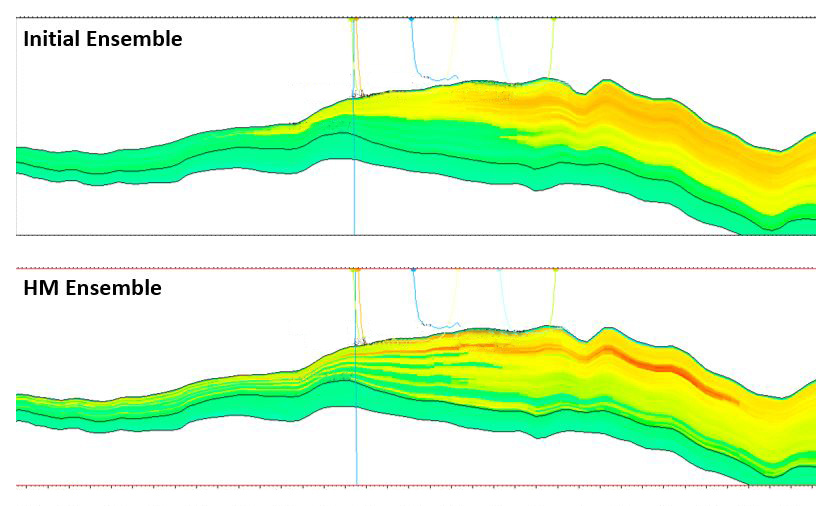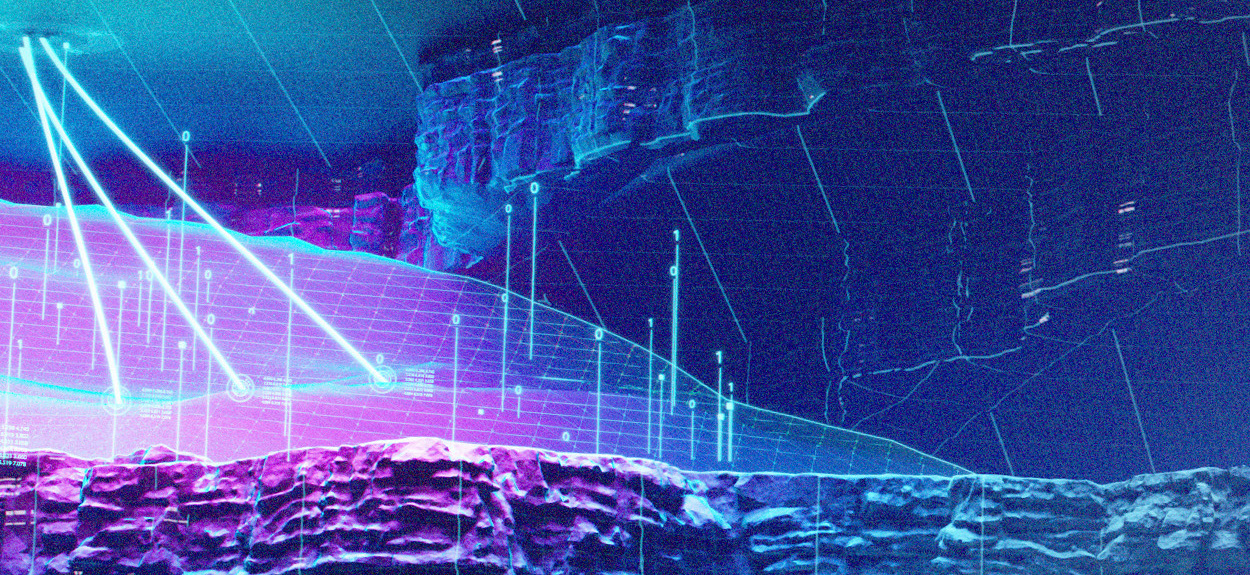Objective
Locate high permeability rock type prior to infill drilling to avoid water breakthrough
Solution
Create an ensemble of models with the inherent subsurface uncertainties, conditioned to all available data while remaining consistent with history matching outcomes
Outcomes
- The probable locations and likely properties of the high permeability streaks were established
- This enabled the planning of infill drainage wells while avoiding a bypass of reserves or an acceleration of a water breakthrough.
Project description
You know it is there…
For this carbonate reservoir, no direct detection process can resolve the high-permeability streaks known to strongly influence flow patterns in the reservoir. If the operator drills an infill producing well perforating one or more streaks it will rapidly result in water breakthrough while leaving oil in place in the less permeable facies.
History matching in ResX
An ensemble of 100 realizations was created in ResX representing the reservoir variability and uncertainties for both the geology and the reservoir’s static and dynamic characteristics.
An iterative workflow history-matched the ensemble, resulting each time in small changes to equiprobable models to minimize the specified objective function (e.g., production rate, water cut and bottom hole pressure). The resulting P50 across 100 realizations shows clear high-permeability streaks (see fig 1B).
Better Forecasting
The cumulative oil production forecast from the history-matched ensemble captures the main uncertainties, notably FWL and structure. Seeing the spread of possible forecasts 5, 10, and 20 years ahead gives decision-makers a better grasp of business risks than the usual one or two deterministic scenarios yielded using conventional methods.


Solution Highlights
- Workflows honor the recommended static and dynamic modelling processes suited to the field’s complexity.
- Realistic sedimentological, structural and dynamic reservoir parameter uncertainties were identified and propagated to obtain a complete view of variability in the reservoir simulator response.
- These integrated workflows were used to generate an ensemble of equiprobable reservoir models.
- All realizations in the ensemble were then history-matched simultaneously, delivering improved matches for all the defined objective functions. Well-by-well matching achieves a good level match on the field level.
- Verification: PLT data was used as a blind test to validate the result. Trends of fluid flow along horizontal wells captured the characteristics of high permeability streaks
- Analysis of forecasted ensemble dynamic responses help evaluate the performance of existing infill targets and delineate new infill targets while understanding the associated risks under both static and dynamic uncertainty.
Asset Highlights
This is an onshore Abu Dhabi producing field owned and operated by ADNOC. The reservoir is an under-saturated oil reservoir with gross average thickness of 50 to 150 ft. The northern complex shelf-type carbonate exhibits large lateral and vertical rock property variations, while the southern lagoonal section has poor reservoir properties. The porosity and permeability ranges of the reservoir are 0.06 pu -0.3 pu and 1.2 mD – 2500 mD. There are unclear lineaments within the field’s structure that are seismically unresolved.
The field has been in full production since 2006, with 9 horizontal producer wells (6 of them active) in the shelf marginal area each with open hole completion of 2,000 to 3,000 ft drain hole.
References
Presented at SPE ATCE 2021 in Dubai – see SPE paper 205854
